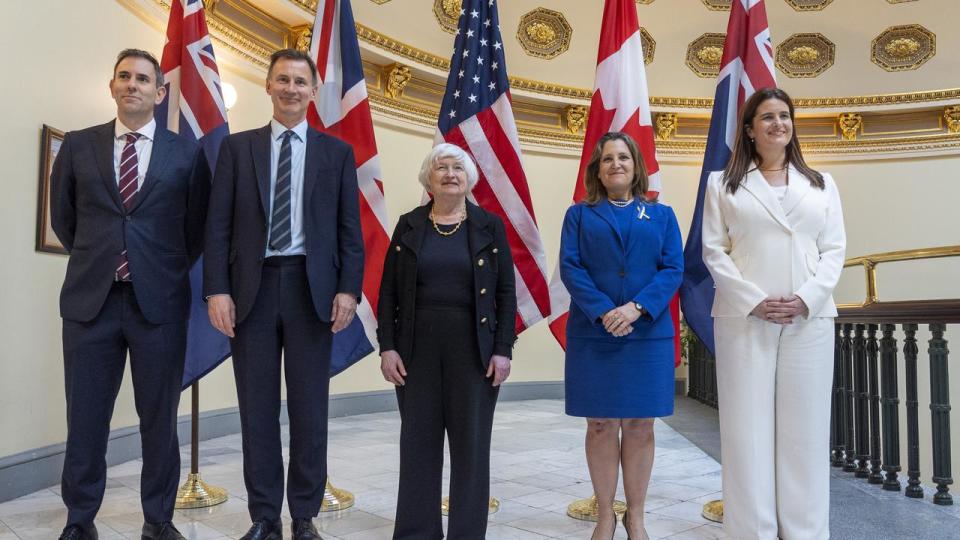More cost of living relief on cards in federal budget
Cost of living help in addition to well-signposted tax relief remains on the cards if the federal government can find room for it in the upcoming budget.
Treasurer Jim Chalmers says the tax relief, due to kick in midway through this year, will be the centrepiece of his government's financial support plan.
"And if we can afford to do a little more than that, then those decisions will be taken in the next week or two," Dr Chalmers told reporters in Canberra on Monday.
The treasurer acknowledged the pain Australians were feeling but said any additional cost of living help would need to "take the edge off inflation rather than add to it".
Headline inflation has moderated from its peak but the 4.1 per cent annual lift in the December quarter is still above the two-three per cent target range.
March quarter inflation data is due on Wednesday and is expected to show inflation picking up a little on a quarterly basis from the 0.6 per cent recorded through to December.
Though due to base effects, economists believe it will moderate from the 4.1 per cent annual rise recorded in the 12 months to December.
Dr Chalmers said inflation remained the focus in the short term, and was one of the reasons his government was still shooting for a surplus in 2023/24.
Yet asked if deficits in the next two financial years as forecast in the mid-year budget update were suitable in a high inflation environment, he said the balance of risks were shifting.
"And our fiscal strategy will shift a little bit with it," Dr Chalmers said.
Ahead of the May 14 budget, the treasurer has been meeting with G20 counterparts in Washington, and said global uncertainty has prompted Treasury to revise growth expectations for key economies.

China's growth has been downgraded by 0.25 percentage points in 2025 to 4.25 per cent, according to Treasury forecasts.
The downgrade would mean China's growth would be the weakest period since the Asian nation opened its economy up in the 1970s.
The UK economy's forecast has also been downgraded by 0.5 percentage points to 1.25 per cent in 2025, prompted by cost of living pressures and a slump in exports following Brexit.
Japan has had its growth revised to just 0.75 per cent in 2024, down by 0.25 percentage points after weaker than expected consumption.
It's unclear if these revised forecasts will have implications for the domestic context, with the treasurer indicating Australia's refreshed predictions will be in the budget.
Last week, the International Monetary Fund revised its global growth forecasts up slightly, with the upgrade fuelled by strength in the United States.
Other advanced economies, such as Australia, were projected to grow more slowly.
AMP chief economist Shane Oliver said Australia's far weaker economy - with GDP growth less than half the US pace and consumer spending far weaker - could lead to the Reserve Bank cutting interest rates before America's central bank.
"The RBA has not always just followed the Federal Reserve – after the Global Financial Crisis it started hiking in 2009 when the Fed was on hold near zero, and the RBA was cutting and holding rates when the Fed was hiking over the 2015 to 2018 period," Dr Oliver wrote in a note.
He said further progress on Australia's inflation in the March data would further the case for the RBA cutting ahead of the Federal Reserve.


